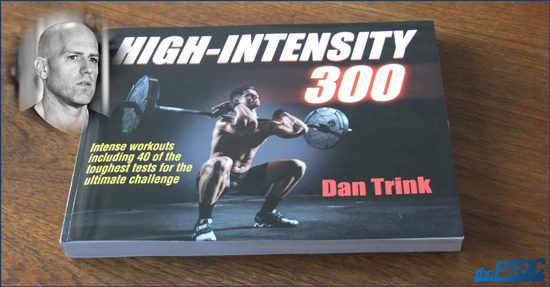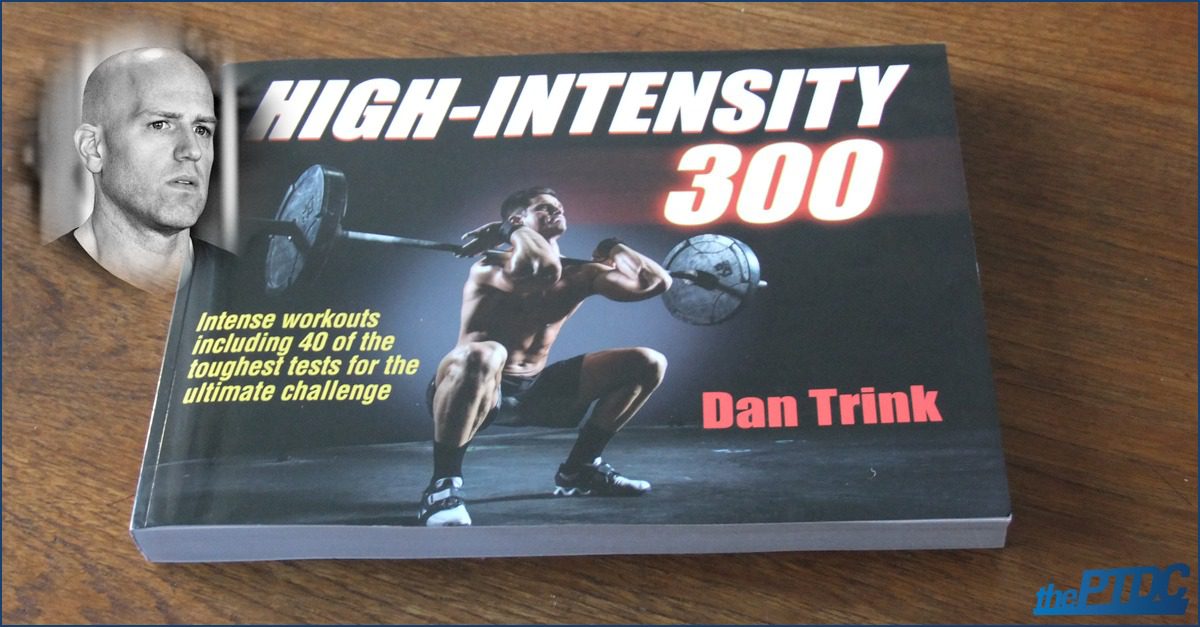"I only know about 8 exercises."
THIS IS THE LINE I use on my clients all the time. Particularly once they figure out through all the talk of undulating periodization, the value of training various strength qualities and the need for variety in assistance work that we pretty much use the same movement patterns over and over again. We're going to squat, deadlift, lunge, press, and pull every week. I'm as meat-and-potatoes a trainer as they come.
So when Human Kinetics, a prestigious publisher of fitness-related books, contacted me about writing a fitness book on high-intensity, high-frequency, short-duration training that puts a priority on variety of movement my first thought was "I only know 8 exercises."
Of course, I didn't want to turn down the opportunity to write a book -- not-so-surprisingly, they don't come around that often -- but I also knew myself enough to realize that I couldn't bullshit my way through 400 pages either.
So with that, I began the negotiations, counter-negotiations, brainstorming, proposals, re-writing of proposals, submitting credentials, writing a manuscript, revising of manuscript, shooting of photos, revising of manuscript, calling in favors, revising of manuscript, promotions, and finalizing of manuscript that comes with writing your first book.
I learned a lot along the way. If you aspire to write fitness books, or any type for the first time, here are some lessons learned from my bloody, overworked keyboard.
You're In It For The Long Haul
I verbally agreed to write this book the day before my son was born. He's now nearly 2 and a half years old. Even if you have a very well thought out idea, the process of concepting, writing, revising, and producing a book with a publisher takes some time.
Make sure you can dedicate enough of your days, weeks, and sometimes years of your life that it's going to take to see it through to the end. I spent many Sunday afternoons (my one day off) in the basement of my local Starbucks, away from my friends and family to get the project done. Are you willing to do the same?
You're Not Going To Get Rich
If you're a first-timer chances are that you are going to get a standard, royalty-only deal. Which means you will only get paid once the book comes out and you'll only get a small percentage from books that sell.
Not only that, you'll actually be responsible to share some of the financial costs that go into producing the book. So if you think that getting a book deal puts you on the road to easy street, you're sorely mistaken.
The hope is that either your first fitness book sells enough copies to stir interest in a second book that could allow you to negotiate an advance, or the prestige of being a published author opens doors to other opportunities (speaking, advisory boards, ability to charge higher rates).
It's Your Name On The Cover
If you've never gone through it, you'd be amazed at how many people it takes to get a book to publication. There are developmental editors, content editors, assistant content editors, photographers, promotions, digital content experts, graphic designers, and videographers who will all help you get your product on the shelf.
And while all these people want your book to be a success, they'll have their own ideas on what will make it successful. You're going to have to make some compromises (an image of Superman may be perfect for the cover but the publisher isn't going to pay for the rights, for example) but when it comes to the fitness related content of the book you should stick to your guns.
You're the one who's on the gym floor and has the expertise in whatever topic you're working on. The publisher probably knows more about sales distribution channels and paper stock than you do. But when it comes to the words on the page make sure that you have final say.

Don't Sell Out
While short, high-intensity, high-variation workouts are not how I typically train my clients, I was able to put together a proposal and a finished product that stayed true to how I would arrange a training program and longer training cycles.
For example, I made sure that the core lifts were a part of each workout and I was able to periodize for different strength qualities (fat loss, strength gain) in a way that made sense from an exercise science perspective rather than just randomly mixing up workouts.
Whatever topic you write about, make sure that the finished product is something that you can stand behind. Of course, you're going to have some compromises, but when your fitness book hits the shelves you want it to be something you believe in and are proud of.
I'd be lying if I told you I had the secret to getting a book deal. I don't. But should you get the opportunity to write your own fitness book be sure to have integrity, fight for what you believe in, compromise when necessary and write about what you know. And prepare to work your ass off.
I know I did.
Editors Note
 High-Intensity 300 by PTDC coach Dan Trink is a must-have for any personal trainer's library. This tome is the ultimate workout guide featuring 300 different workouts.
High-Intensity 300 by PTDC coach Dan Trink is a must-have for any personal trainer's library. This tome is the ultimate workout guide featuring 300 different workouts.
Complete with engaging names, descriptions, pictures, and exercise cue's, this is a fantastic addition to any trainer's library.
On a personal note, Dan is the one that I trusted my training with for many months while in Hawaii preparing for a photoshoot. When it comes to programming, he's one of the best. Investing in his book is a fantastic way to learn how to take your programming skills to another level.
xxx
Further Reading
The Best Personal Training Books - Jonathan Goodman
Personal Trainer Shouldn't Periodize - Jonathan Goodman
The Deadlift Exercise - Dean Somerset
How to Build Programs Using Undulating Periodization - Greg Nuckols










